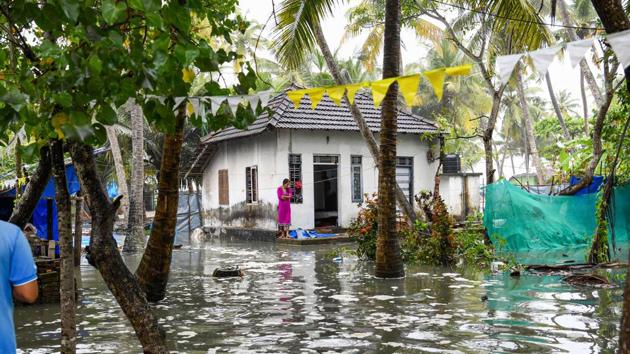To build urban resilience, we must empower the city | Analysis
India’s city governments are weak, and departments work in silos. To tackle climate change, this needs to change
It will not be an exaggeration to say that cities in India are in a mess. Air pollution, water crisis, flooding, and waste management issues, you name the challenge, and we have it on our list of woes. To make matters worse, there is now the threat of climate change. Last week, India got another wake-up call. A study by Climate Central, a US-based climate think tank, said that if spiralling emissions are not brought under control, parts of Mumbai, Surat, Chennai, and Kolkata, will be either underwater or ravaged by recurring floods by 2050. This is because sea levels across the world will continue to rise due to increasing carbon emissions, leading to coastal flooding, higher storm surges, and displacement of people.

With the climate challenge becoming bigger and bigger, it is imperative that cities invest in resilience strategies so that lives, property, and urban infrastructure are not lost due to climate-induced devastations. One way would be to build accurate risk-based land-use planning and steer future growth away from high-risk areas. “A low-hanging fruit will be the smarter use of density and transit-oriented development, such as allowing much higher densities around public transport nodes will minimise urban sprawl and carbon emissions [a major cause for climate change],” advises Abhas Jha, practice manager, the World Bank Group.
While several Indian cities like Pune (Maharashtra), Surat (Gujarat) and Chennai (Tamil Nadu) are dovetailing resilience into their planning process, the number of cities that are yet to opt for that path is far higher. This inability or disinclination for resilience-related issues is because of two intertwined problems: One, India’s cities are still not adequately empowered, despite the 74th Constitutional Amendment Act, 1992, which aims at strengthening democracy at the grass root level through local bodies.
External experts who work with urban local bodies often rue about the lack of accountability and corruption at the corporator-mayoral level. “Most Indian cities are not autonomous, with most funds coming from state and central governments. So a city government’s client is the state or the federal government, whereas actually, it should be the citizens,” Saurabh Gaidhani, associate director, Asia Pacific, City Resilience Delivery, 100 Resilience Cities (100RC), The Rockefeller Foundation, told me during a recent interaction. This means that basic service delivery, and long-term planning for resilience gets affected. Second, departments in city governments tend to work in silos. But synergy between them is critical because addressing the climate challenge requires multi-sectoral, coordinated and iterative solutions over a long period.
One of the innovations that the 100RC project proposed, and which has been accepted by the local governments of Pune, Surat, and Chennai, is creating a position for a chief resilience officer (CRO). A CRO is expected to build a culture of collaboration between departments, help the officials to map out a resilience programme, and bring citizens and corporate companies on board.
The Resilient Pune plan includes a set of initiatives to address uncontrolled growth, inadequate access to mobility, unemplyment under-employment among youth, inward migration and stressed urban environment. Surat’s resilience plan includes implementation of an adequate public transport system, improved housing that uses building techniques that consume less energy, and a water conservation and monitoring plan. The resilience plan of Chennai includes protecting informal settlements of the underprivileged communities in low-lying coastal areas.
Along with these three cities, the 100RC has also helped set up an urban resilience unit at the National Institute of Urban Affairs, New Delhi, to mainstream resilience in urban planning and development of cities in other parts of the country. Cities in other parts of the world are also trying out the CRO route. For example, the city of Los Angeles has one resilience officer in each department, and all of them report to the CRO at the mayor’s office.
But along with changes in the local governance planning and structure, growing efforts at building resilience in developing nations such as India faces another hurdle. There is a lack of trained urban planners, resilience engineers, accountants, amplifying the need to attract the best and brightest to work at the city-level in these functions.
Among Asian countries, China leads in building resilience. It has more metro lines than the rest of the world combined. It has the largest electric bus fleet in the world. The government is also building “sponge cities”, the idea is to design urban spaces to catch rainwater where it falls. By 2020, the government wants 20% of the built area of each pilot district to have sponge city functions, meaning at least 70% of stormwater run-off should be captured, reused, or absorbed by the ground. By 2030, 80% of each city should meet this requirement. Seoul is aiming to add 2,000 km of bike paths and create 250 pedestrian zones. Hanoi plans to generate electricity from its biggest landfill, which will reduce emissions and generate electricity.
For centuries, cities have been centres of commerce, culture and innovation. While there is no single solution for tackling climate change and its ill effects, cities across the world must now develop the ability, the capacity, and the will to take on the challenge. And Indian cities cannot afford to lag behind and miss the bus.
kumkum.dasgupta@htlive.com






